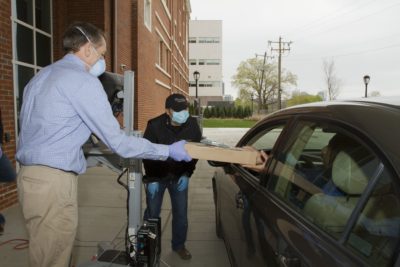

The newly enacted $1.9 trillion American Rescue Plan will soon send serious money into North Carolina schools — serious in amount, serious in purpose. A huge infusion of federal funding represents a blessing and a burden as an opportunity to restore students to an upward academic trajectory and to transition schools to a post-pandemic “new normal.”
The ARP package appropriates $170.3 billion for education — $125.4 billion for K-12 schools and $39.6 billion for higher education, with money also designated to such uses as extending internet connections and assisting private schools serving low-income students. The Learning Policy Institute calls the package “the federal government’s largest ever single investment in our schools.”
According to Congressional Research Service calculations, North Carolina will receive $3.6 billion for its elementary and secondary schools and $1.13 billion for colleges and universities. In addition, the law provides $1.3 billion in assistance to child-care facilities and families, as well as nearly $25 million for Head Start.
In the financing of its public schools, North Carolina still lives with its legacy from the Great Depression when the state stepped in to rescue anemic local governments. Unlike many other states with multiple, compact school districts that rely heavily on property taxes, North Carolina has mostly countywide districts (100 counties with 115 school districts), with state government bearing the major share of paying teachers and funding day-to-day operations. State government accounts for 62% of per pupil funding, local governments 27% and the federal government 11%.
In contrast, the ARP package directs 90% of the federal recovery money to local school districts and 10% to the state. While the Department of Public Instruction and state Board of Education may play important roles in policy guidance and technical assistance, school superintendents and local boards will have substantial responsibility and accountability for deploying the federal money — hundreds of millions of dollars in the major metropolitan counties, tens of millions in a wide swath of counties across the state.
In the law, Congress gives state and local authorities significant flexibility, but it also imposes some directives. Most prominently, the law requires 20% of each district’s allotment be used to recoup students’ learning-loss resulting from the arduous shift from in-class to online instruction. Congress also intends federal funds to hasten the reopening of schools safely — through improved schoolhouse ventilation, reduced class sizes to keep social distancing, and the hiring of health and well-being staff.
The law also prohibits states and local governments from cutting taxes or supplanting their own education funding with the new federal funds. In its maintenance of effort requirements, the law is especially focused on protecting schools with large enrollments of economically disadvantaged students.
As potentially potent as the serious money may be in igniting transformation in public education, it does not substitute for North Carolina’s own responsibilities toward its public schools — for example, in addressing the need for more and high-quality teachers through raising salaries and expanding professional development. Those issues are raised in the “comprehensive remedial plan” fashioned by the parties to the long-running Leandro case and released coincidentally shortly after President Biden signed the American Rescue Plan legislation.
“In NC and across the US, relative teacher pay — teacher pay compared to the pay for other career opportunities for potential and current teachers — has been eroding for over a half a century,” says the Leandro case document. “… Providing teachers with compensation commensurate with other professionals with similar education is not simply a matter of fairness — it is also important to improving student achievement because effective teachers are the most important school-based determinant of student educational performance.”
The serious money from the federal government comes to alleviate the traumas of a virulent virus and to give schools propulsion into a “new normal.” Even as reopening and recovery play out, North Carolina can begin this year to devote its own serious money through the decade toward fashioning a high-flying corps of professional educators.
(For more details and explanation of the ARP, see these papers by the Southern Regional Education Board and Future-Ed at Georgetown University.)




